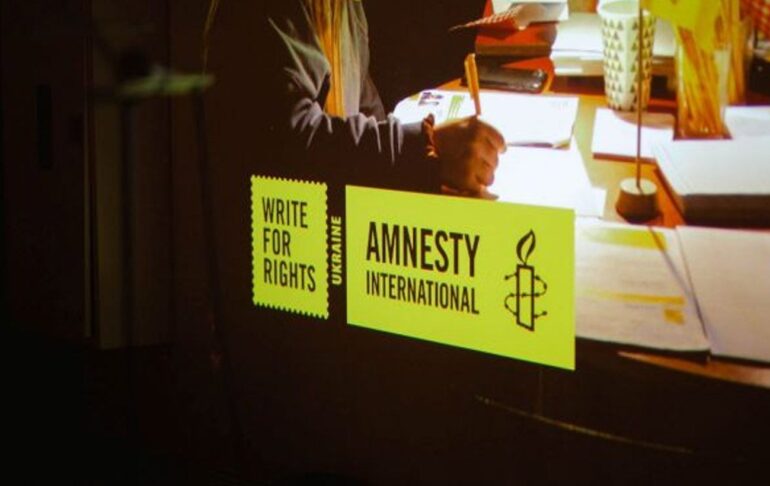TL;DR:
- Amnesty International was criticized for using AI-generated images attributed to Colombian protests.
- Images presented by Amnesty International showed signs of manipulation and inaccuracies.
- Concerns were raised about credibility and the potential impact of conspiracy theories.
- State forces were responsible for deaths and human rights abuses during the protests.
- Amnesty International defends the use of AI-generated images to protect protesters’ identities.
- Decision made to remove images from social media posts following criticism.
- The organization acknowledges the need for further understanding of ethical implications.
- Protection of protesters’ identities is crucial to prevent persecution and inflated charges.
- Torres criticizes the use of AI images, highlighting the importance of authenticity and connection in journalism.
Main AI News:
In the midst of the 2021 Colombian protests, the Colombian police resorted to systemic brutality to suppress the unrest. While the reality of this harsh crackdown is well-documented, Amnesty International recently faced criticism for utilizing artificial intelligence (AI) to generate images that were misleadingly attributed to the protests. The international human rights advocacy group has since removed these images from their reports and social media platforms.
The images presented by Amnesty International depicted scenes from the protests, including a woman being forcibly dragged away by police officers. However, upon closer examination, it becomes evident that something is amiss. The faces of both the protesters and police officers appear unnaturally smooth and distorted, creating an eerie and dystopian atmosphere. Furthermore, there are inaccuracies in the images, such as the incorrect order of colors in the tricolor carried by the protester and outdated police uniforms.
Amnesty International, along with other observers, has extensively documented numerous cases of human rights abuses committed by Colombian police during the wave of unrest in 2021. These abuses range from violence and sexual harassment to torture. Their research has been instrumental in raising awareness about the heavy-handed approach of the Colombian police and fostering a growing acknowledgment of the need for reform.
However, the use of AI-generated images by Amnesty International has raised concerns among photojournalists and media scholars. They argue that such images could undermine the credibility of Amnesty’s work and potentially fuel conspiracy theories. In an era characterized by heightened polarization and the proliferation of fake news, the credibility of the media is constantly called into question.
Juancho Torres, a photojournalist based in Bogotá, aptly stated, “We are living in a highly polarised era full of fake news, which makes people question the credibility of the media. And as we know, artificial intelligence lies. What sort of credibility do you have when you start publishing images created by artificial intelligence?“
During the 2021 national strike in Colombia, state forces were responsible for the deaths of at least 38 civilians. The protests were initially triggered by unpopular tax reform and further fueled by the brutal response from the police. Shockingly, cases documented by Bogotá-based organization Temblores revealed that women were abducted, taken to dark buildings, and subjected to rape by groups of policemen.
Amnesty International defended its use of AI-generated images, asserting that it sought to protect the identities of protesters from potential retribution by the state. In previous reports, the organization had used photographs, but this time, they opted for AI-generated images. To ensure transparency, the images included text indicating that they were produced using AI.
However, due to the criticism received, Amnesty International made the decision to remove the images from their social media posts, emphasizing their commitment to the core message of supporting the victims and their demand for justice in Colombia.
Erika Guevara Rosas, the director for the Americas at Amnesty International, acknowledged the seriousness of the criticism and expressed the organization’s desire to engage further in order to gain a better understanding of the implications and ethical dilemmas associated with the use of AI technology.
Gareth Sella, who lost sight in his left eye when he was struck by a rubber bullet fired by a police officer in Bogotá during the protests, argues that concealing the identities of protesters is necessary to safeguard them from facing inflated charges and potential imprisonment.
Sella highlighted the fact that the United Nations had documented the state’s ongoing pursuit of protesters, with over 100 individuals already imprisoned, many facing disproportionately severe sentences, including charges of terrorism. Given this reality, protecting the identities of protesters seems a logical step to shield them from the constant fear of arbitrary detention or persecution.
Torres, a vocal critic of AI-generated images, raises concerns about their usage by organizations like Amnesty International. He argues that relying on AI images not only diminishes the authenticity of events but also undermines the crucial connection between journalists and their audience. Torres emphasizes the importance of photojournalists risking their lives to capture the reality of events and establish a genuine bond with the public.
Conlcusion:
The utilization of AI-generated images by organizations like Amnesty International in the context of photojournalism presents significant implications for the market. The controversy surrounding the use of these images highlights the importance of credibility, authenticity, and transparency in media and journalism. As consumers become increasingly discerning and cautious about the information they consume, the market demands a commitment to ethical practices and accurate representation.
Maintaining public trust and fostering genuine connections with the audience will be key for organizations operating in the media industry. Additionally, advancements in AI technology offer both opportunities and challenges for visual storytelling, necessitating careful consideration of the ethical and societal implications as the market continues to evolve.

